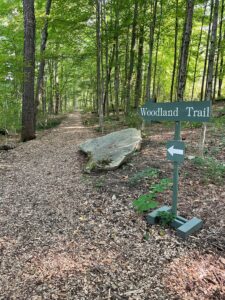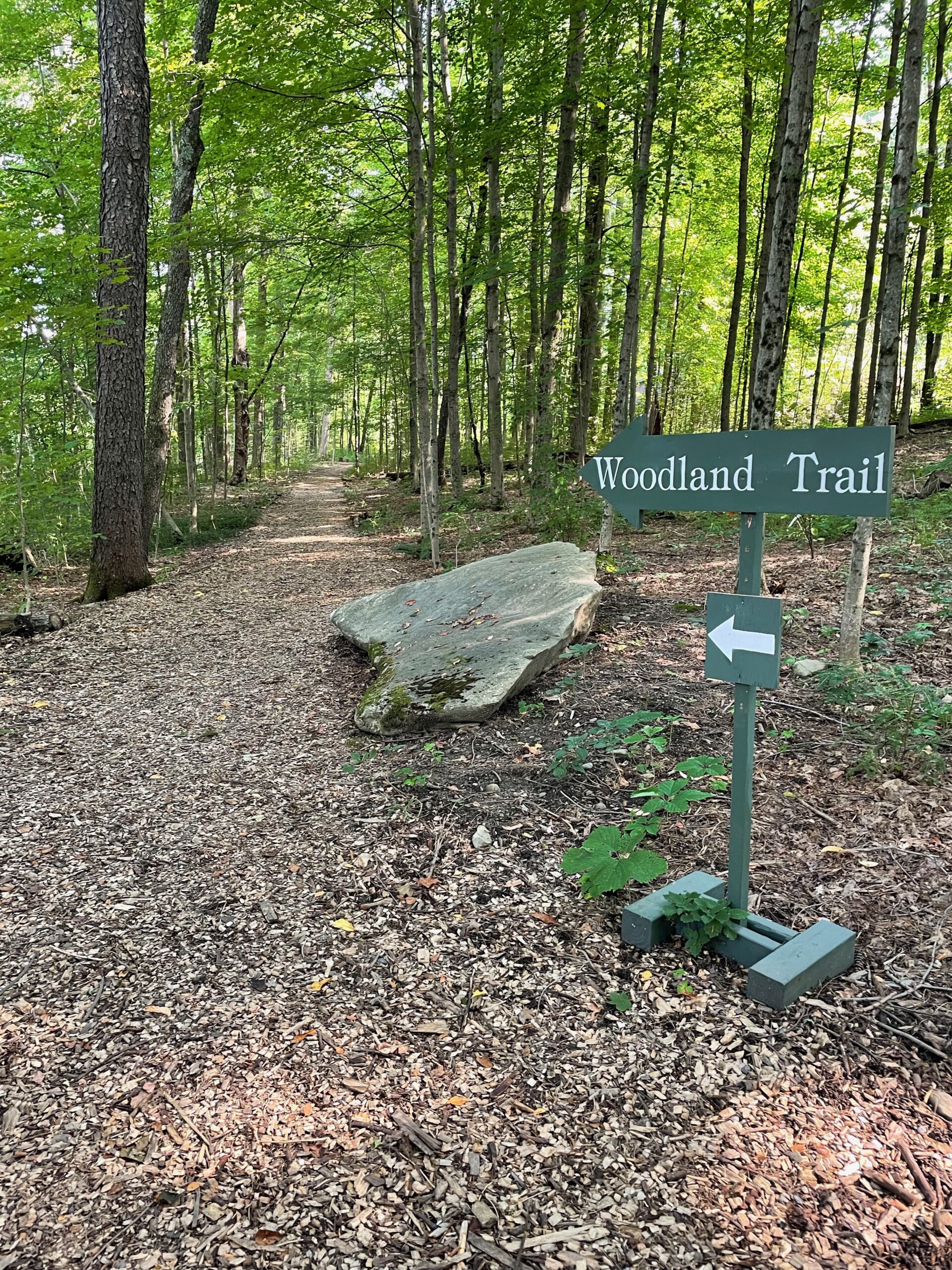Tick Season
 Putting down a surface of wood chips on wide paths like Berkshire Botanical Garden’s Woodland Trail eliminates cover for ticks, decreasing the possibility of picking them up in transit.
Putting down a surface of wood chips on wide paths like Berkshire Botanical Garden’s Woodland Trail eliminates cover for ticks, decreasing the possibility of picking them up in transit.
If you think you’ve picked off more than the usual share of ticks this summer, you may well be right. Dr. Thomas Mather, Director of the University of Rhode Island’s Center for Vector-Borne Disease, and its TickEncounter Resource Center, says this year has seen a surge in the population of American dog ticks. He’s got data to prove this, too. The Center’s “Tick Spotter” nationwide crowd-sourced tick survey, indicates a boom in that species’ numbers in many regions. Tick Spotter is a free on-line service by which persons anywhere in the United States who’ve found a tick can submit a photograph for identification by an expert. An I.D. comes within 24 hours, and includes information about whether the tick seems to have been feeding, Thankfully, this has not been matched by an increase in blacklegged ticks, the species that carries Lyme Disease.
The Tick Spotter survey (just log onto tickencounter.org), responds to submissions within 24 hours, will also inform users about whether the tick seems to have been feeding, what diseases it may be carrying, and the relative risk in the user’s area that the tick is infected.
In addition, the website offers all sorts of tips for “TickSafe” living, including hints ranging from learning what kinds of ticks are active in your area at different times of the year (TickEncounter provides a well-illustrated field guide) to instructions about the safer removal of an embedded tick (use pointed-tip tweezers to avoid squeezing the tick’s belly and injecting its contents into yourself), even instructions for hiking (stay to the center of trails, as nymph- and larval-stage ticks are more common in the leaf litter that accumulates on the sides of trails, and adult-stage ticks wait for passing hosts shin-to-knee high on tall grasses and other low vegetation at the trail edges).
In a personal communication, Dr. Mather also recommended wearing permethrin treated clothing when outdoors during tick season, which can extend into the milder parts of the winter for blacklegged ticks. Such clothes, if professionally treated, can remain effective through 70 washings. Although Dr. Mather also recommended hiring a trained professional to treat your yard with an appropriate pesticide to eliminate resident ticks, he noted that the only large scale study of such treatments of residential properties found that a single application, while it did reduce the number of ticks on-site, did not reduce the likelihood of a tick bite, perhaps because those most at risk, people with an interest in the outdoors, are likely to venture outside their own properties.
I dislike the use of chemical pesticides, so I also consulted natural landscape designer and consultant Kathy Connolly of Speaking of Landscapes, Llc. about how she copes with ticks. Kathy agreed with Dr. Mather about the virtue of permethrin-treated clothing, and suggested having your favorite outdoor and gardening clothes professionally treated by some service such as Insect Shield (insectshield.com). Such a treatment will also last through 70 washings. Kathy reiterated Dr. Mather’s advice to tuck your treated pants into your treated socks, and to tuck in your shirt-tail. In addition, Kathy suggested similarly treating cold weather clothing so that you will continue to be protected during the colder part of the tick season. She also recommended stripping off your clothes and putting them in the dryer as soon as you return indoors. Ten minutes in the dryer on high, according to the TickEncounter website, will kill any hitchhiking ticks.
Kathy has laid out wide paths surfaced with wood chips along the routes she commonly takes through her own garden, and says that stone dust or stones would work as well. Deprived in this way of cover, the ticks are unlikely to hang out in the paths, so if you stick to the surfaced walkways, you will be much less likely to run into them. Kathy also emphasized that ticks prefer moist habitat, so locating the high-use areas of your landscape such as the children’s play spot or outdoor dining in sunny areas will further reduce the frequency of tick encounters.
Kathy emphasized that you can reduce the number of your encounter with ticks, but that if you spend time outdoors in the warmer weather, you cannot entirely eliminate them. Still, her suggested modifications of the landscape if combined with the practices advocated by Dr. Mather and TickEncounter can do a lot to safeguard yourself and your family.
For more information about dealing with ticks, log onto the Berkshire Botanical Garden podcast on the subject at thomaschristophergardens.com/podcasts/dealing-with-ticks.
-30-
Be-a-Better-Gardener is a community service of Berkshire Botanical Garden, located in Stockbridge, MA. Its mission, to provide knowledge of gardening and the environment through a diverse range of classes and programs, informs and inspires thousands of students and visitors each year. Thomas Christopher is a volunteer at Berkshire Botanical Garden and is the author or co-author of more than a dozen books, including Nature into Art and The Gardens of Wave Hill (Timber Press, 2019). He is the 2021 Garden Club of America’s National Medalist for Literature, a distinction reserved to recognize those who have left a profound and lasting impact on issues that are most important to the GCA. Tom’s companion broadcast to this column, Growing Greener, streams on WESUFM.org, Pacifica Radio and NPR and is available at his website, https://www.thomaschristophergardens.com/podcast.

